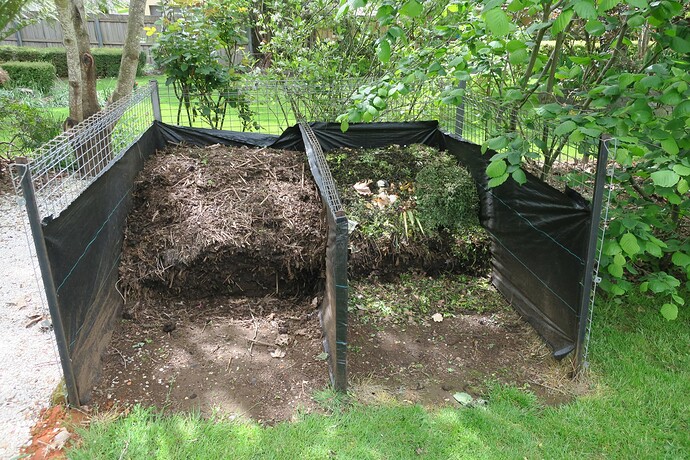We use our glass bottles when we make our jams and other preserves. They never go to waste and never go into the recycling bin.
I printed a copy of the REDcycle list and stuck it to the door where we keep our REDcycle bags before we take them to the supermarket. It’s very handy to easily check what is and isn’t acceptable.
I’ve been backyard composting for many (maybe 40) years. I have 2 bins and alternate, so when one is full I can leave it for 6 months while the other one fills. I put all my organics in there, mostly veggie trimmings (not dairy, meat etc).
Every time I empty my compost bin I add grass clippings to cover. And occasional shredded paper. And I turn it occasionally and add rainwater when I think its too dry.
Works Great! Except for those pesky fruit origin labels which NEVER deteriorate.
Welcome @AnnieB to the community.
It might be of interest to others which style or type of bin you have settled on as best for your needs.
I also use two for the household stuff and alternate. Great source of worms.
We have the same. Our two bins are side by side and made using old fencing panels covered with weed mat - to help retain moisture. It only has walls on three sides…the fourth side is for access. Each bin holds about 2-3m3 of organic materials from the garden and kitchen - mostly garden. It takes us about 6 months to fill a bin. It is turned occasionally to help breakdown the materials placed in the bins. After 6 or so months, it’s emptied and used around the garden.
When in Brisbane we had to regularly water our bins (corrugated iron sides) to maintain adequate moisture content. Now in Tassie, haven’t had the same issue as it retains water better and rainfall more regular. We also add some nitrogen fertilizer (urea) if the bin is higher in brown content, than green. The nitrogen increases the C:N ratio to assist in better/faster decomposition of the materials.
If I remember tomorrow, I’ll take a photo as a photo replaces a 1000 words.
Remembered to take a photo:
The heap on the left is turned every month or two and is about 6 months old. The one on the right is our active bin and will keep adding to it until we use all the left one up around the garden. The left bin was also filled, but over the past 6 months it was reduced in volume by about ⅓.
The front of the bin is open to allow access for turning and also for the wheelbarrow (dropping off materials or taking our completed compost).
When I was involved in a commercial composting operation, the heaps were about 40-50 long, 8m at the base and about 3-4m high. When freshly made, they held around 1200m3 of materials. Over the 8-12 week composting period, the volume reduced by about ¼ to ⅓. The loss of volume wasn’t a concern as the materials had a positive product value (the business was paid to accept materials from a range of difference sources and the loss in volume effectively increased its stock value). Heaps were turned when the temperature reaches 70°C and weren’t allowed to go past 80°C. Past 80°C can cause a range of problems such as the death of the compost (all active microbes are killed stopping the composting process) or lead to spontaneous combustion (if temperature keep rising and the moisture content is right for such conditions). The base mix, turning etc was done to reduce composting times. Regular testing was also carried to ensure that the compost process was completed and that the mixes met relevant statutory and quality requirements.
If you want a good text on composting, it is worth spending the money and getting this book.
The trend towards increased use of compostable fibre based products is well established. Some have been only compostable in an industrial process. Others are supposedly home compostable.
It’s important to note that the industry is self regulating, and as the ABC is pointing out not all products may be all they claim. There are two standard symbols to look out for.
…
For all but one state there is no collection option for either type of product to go to any where other than general waste. I’ve added a couple of AS 5810 trays to the home compost tumbler to see how they go.

